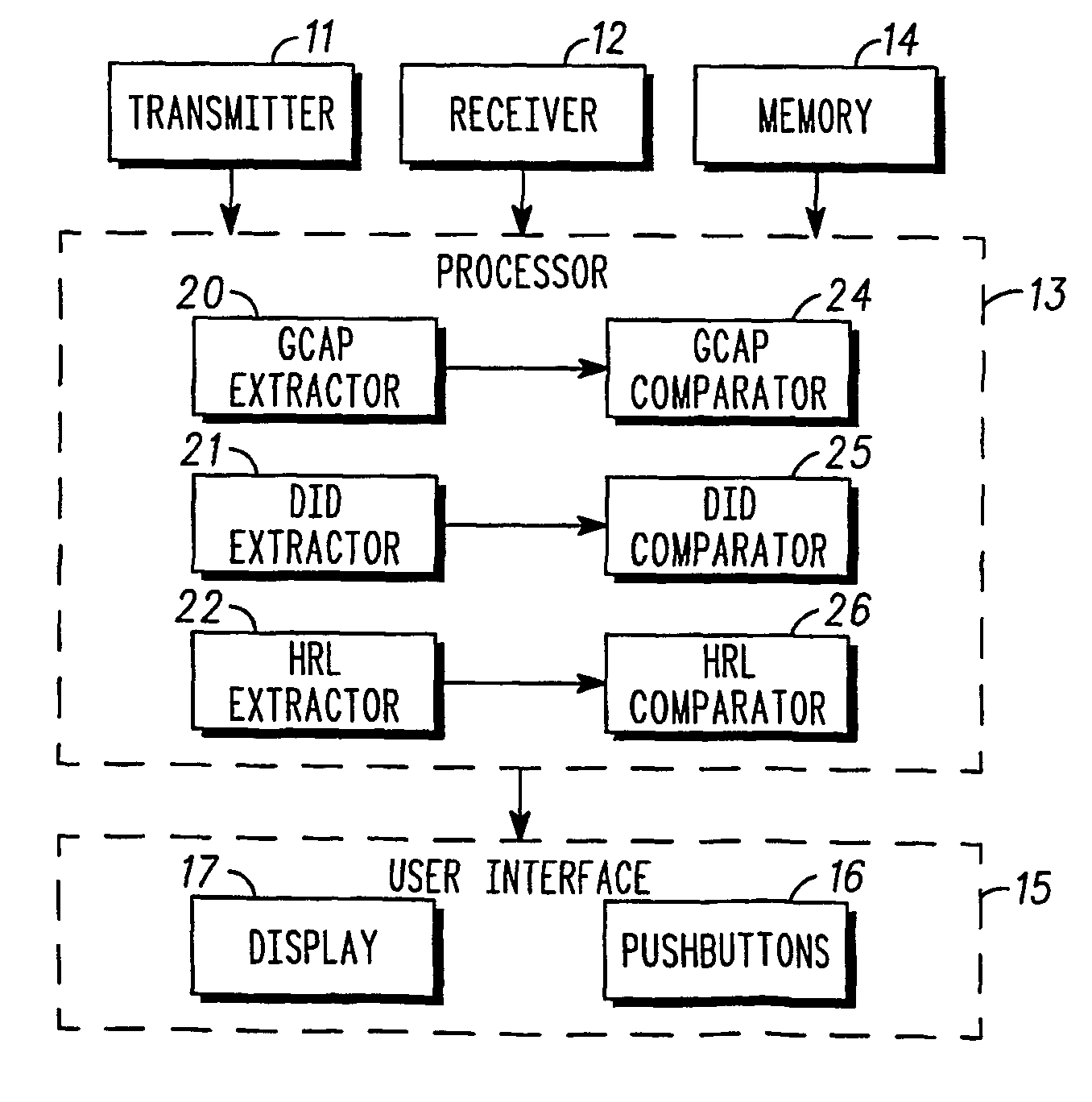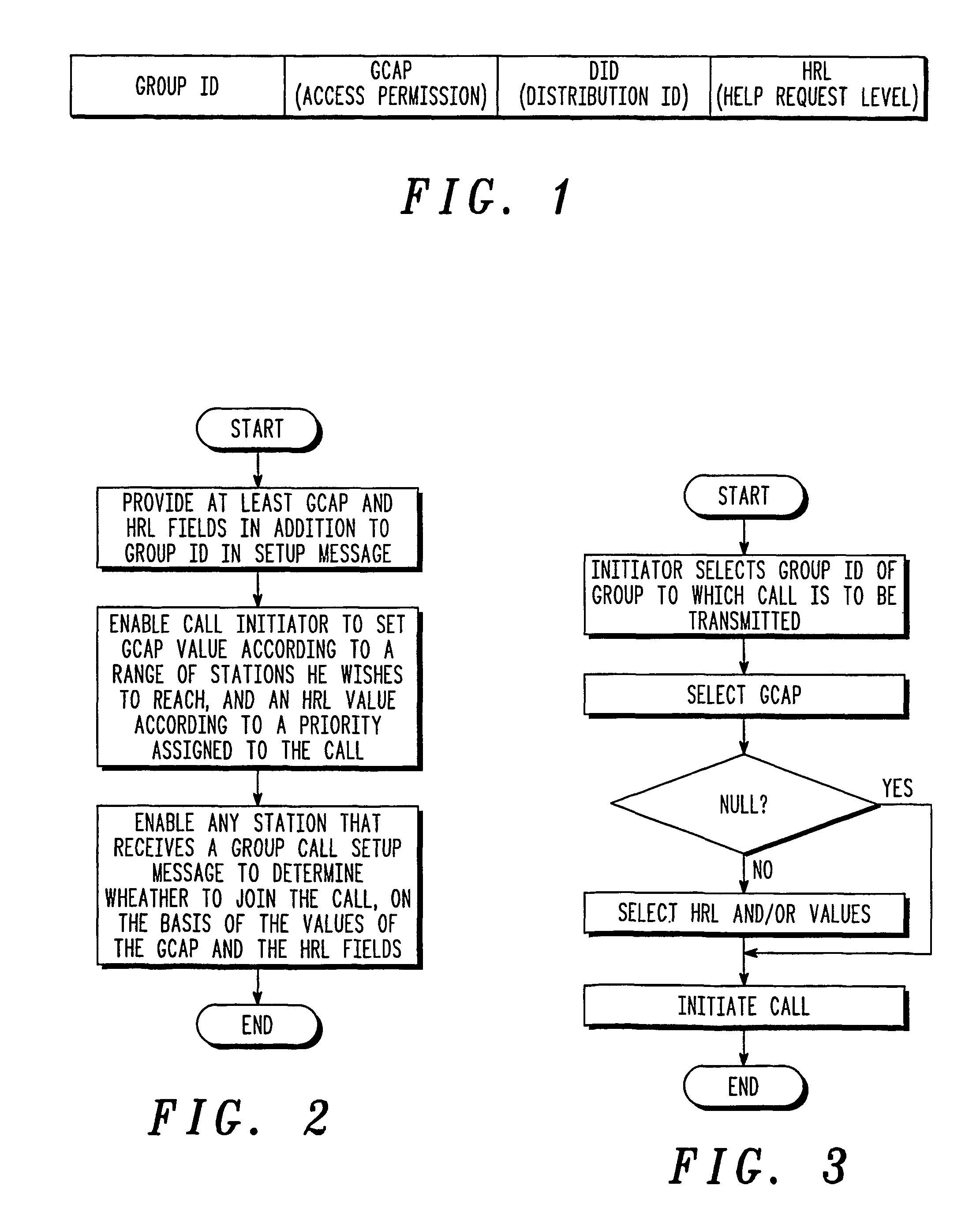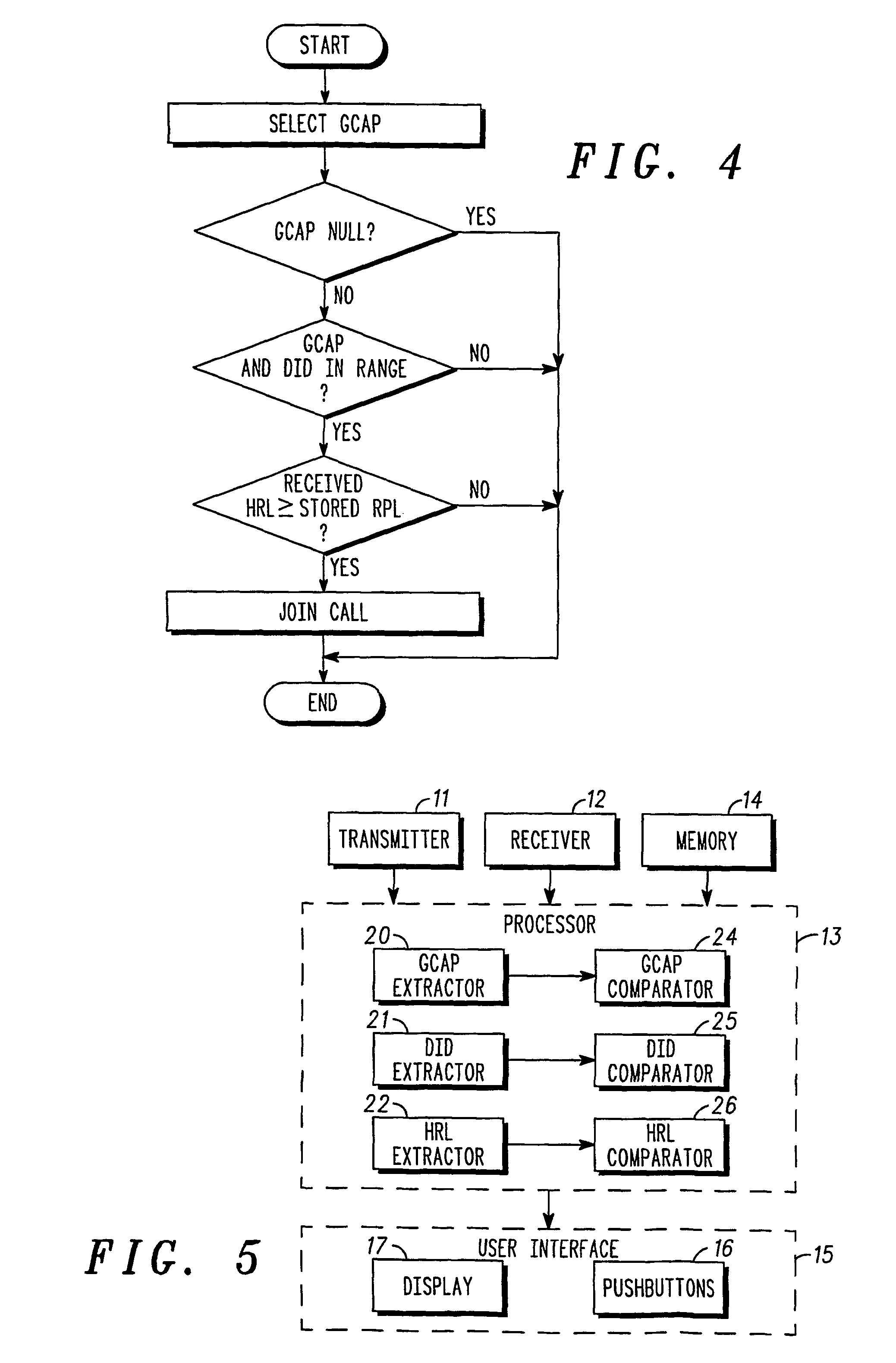Mobile station and method of use in radio communications
a mobile station and radio communication technology, applied in the direction of electrical equipment, network topologies, broadcast service distribution, etc., can solve the problems of limited access to a group call and limited arrangemen
- Summary
- Abstract
- Description
- Claims
- Application Information
AI Technical Summary
Benefits of technology
Problems solved by technology
Method used
Image
Examples
Embodiment Construction
[0068]With reference to FIG. 1 there is shown schematically a protocol for setting up a group call modified to include a class of group calls, to be referred to as “Permissible Access Group Calls” (PAGC), by including at least two additional fields. Thus, for example, a Group Call set-up message, as well as late entry message, may include, in addition to the group ID code, three new fields—a Group Call Access Permission (GCAP), a Distribution ID (DID) and a Help Request Level (HRL).
[0069]The GCAP field identifies the call as a PAGC and conveys the distribution level for the permissible access. It can contain any value from a predefined list of values, in addition to the null value. The null value (for example, 0) signifies that this is not a PAGC, but rather a normal group call, so that only radios programmed to join the group identified in the Group ID field may (and will) do so, as in present systems. In this case the other two fields have no role and are ignored. Other values in ...
PUM
 Login to View More
Login to View More Abstract
Description
Claims
Application Information
 Login to View More
Login to View More - R&D
- Intellectual Property
- Life Sciences
- Materials
- Tech Scout
- Unparalleled Data Quality
- Higher Quality Content
- 60% Fewer Hallucinations
Browse by: Latest US Patents, China's latest patents, Technical Efficacy Thesaurus, Application Domain, Technology Topic, Popular Technical Reports.
© 2025 PatSnap. All rights reserved.Legal|Privacy policy|Modern Slavery Act Transparency Statement|Sitemap|About US| Contact US: help@patsnap.com



